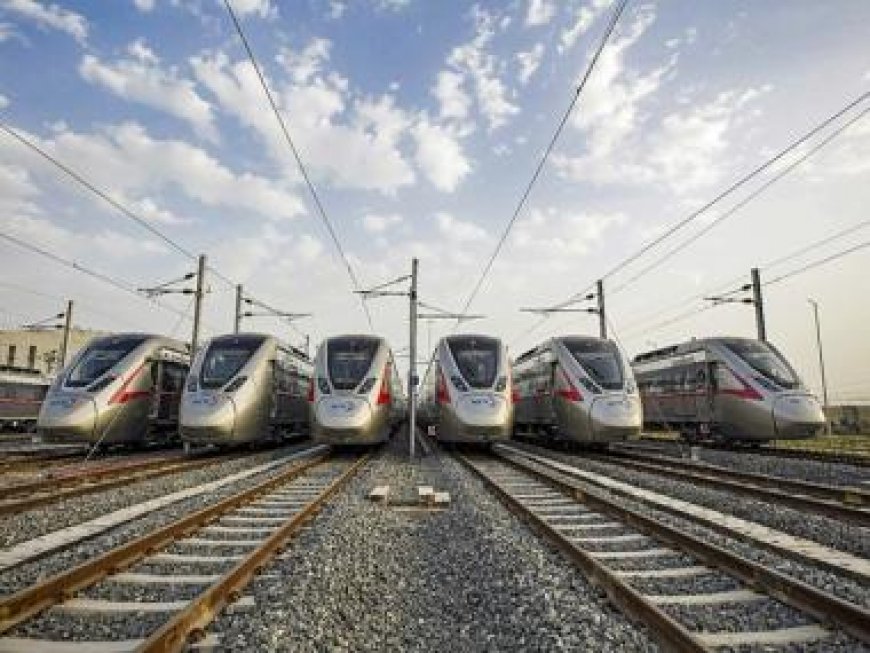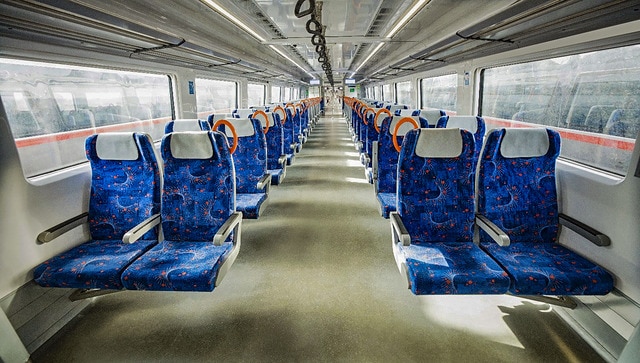What’s notable about RAPIDX trains to be unveiled by PM today?
What’s notable about RAPIDX trains to be unveiled by PM today?

Prime Minister Narendra Modi is unveiling the priority section of the 82-km long Delhi-Ghaziabad-Meerut Regional Rapid Transit System (RRTS) today (20 October). He will flag off the first RAPIDX train from Uttar Pradesh’s Sahibabad station.
The 17-km priority section has five stations – Sahibabad, Ghaziabad, Guldhar, Duhai and Duhai Depot. The RAPIDX train services for passengers will kickstart on Saturday at 6 am.
What is RRTS? How will it benefit commuters? Let’s take a closer look.
RRTS explained
RRTS, or RAPIDX, is India’s first semi-high-speed regional rail service. The entire Rs 32,724-crore corridor covering Delhi, Ghaziabad and Meerut in Uttar Pradesh is expected to be completed by June 2025.
The RRTS project is executed by the National Capital Region Transport Corporation (NCRTC), a joint venture between the Centre and the governments of Delhi, Haryana, Rajasthan and Uttar Pradesh.
Touted as India’s fastest inter-state transit system, the airconditioned RAPIX trains will have an operational speed of 160 kilometres per hour.
India’s first Regional Rapid Transit System (RRTS): Delhi-Ghaziabad-Meerut RRTS corridor
▪️ Prime Minister @narendramodi to inaugurate the priority section of Delhi-Ghaziabad-Meerut RRTS Corridor at Sahibabad RapidX Station, Uttar Pradesh on October 20, 2023
▪️ 17 Km priority… pic.twitter.com/hOtHVseKMV
— PIB India (@PIB_India) October 19, 2023
The average speed of 100 kmph of these RAPIDX trains sets them apart from the Metro as well as the Indian Railways trains. According to the news agency PTI, these RRTS trains have been dubbed ‘Namo Bharat‘.
RAPIDX trains
There will be six coaches, including premium class, in each RAPIDX train with seats in 2 by 2 configuration. The coach adjoining the premium coach is reserved for women.
There are also reserved seats for women, specially-abled, and senior citizens in other coaches.
The standard coach has a total of 72 seats and the premium coach has 62 seats.
A single rapid rail can reportedly accommodate 1,700 passengers, including sitting and standing. The fare for ordinary coaches ranges from Rs 30-50, while the premium ones cost Rs 60-100 on the priority section of the Delhi-Ghaziabad-Meerut corridor.

A one-way ticket from Sahibabad station to Duhai Depot station on the priority section of the RRTS corridor is priced at Rs 50 for ordinary coaches and Rs 100 for premium class, reported PTI.
Each seat will have a facility for laptop or mobile charging. The coaches are also equipped with luggage racks, CCTV cameras, emergency talkback buttons, information screens for passengers and Wi-Fi, as per Times of India (TOI).
The CCTV system will 24×7 monitor the RAPIDX stations, along with issuing alerts regarding any unauthorised entry, unclaimed luggage, and overcrowding, officials told PTI. The premium coach is only accessible through the premium lounge at the platform.
The last coach of the trains will have designated space for wheelchairs and stretchers. All RAPIDX stations also have a first aid facility, as well as other amenities like drinking water and washrooms.
Benefit of RAPIDX trains
Once the 82-km stretch becomes operational, it will reduce the travel time from Sarai Kale Khan station in Delhi to Meerut’s Modipuram to less than an hour.
As per NDTV, a mail express train running between Meerut and Delhi takes one-and-a-half hour, while a local train covers the distance in two hours.
The RAPIDX trains are intended to provide a comfortable alternative road travel as well as decongest Delhi’s roads. These trains running on the 17km priority corridor will be available every 15 minutes initially, as per ThePrint report. They will cover the distance between Sahibabad and Duhai Depot in 15 minutes.
“The RAPIDX operations on priority section will be between 6am and 11pm. The last train from the two ends will be available at 11 pm,” Puneet Vats, Chief Public Relations Officer, NCRTC, told ThePrint.
According to him, the RRTS project could take one lakh passenger vehicles off the roads once fully functional.
Speaking to The Hindu, Vats said that RRTS will not just decongest Delhi’s roads but the city itself. “People will be able to rent or own properties in low population density areas and commute to work to Delhi, without having to compromise on the kind of space they want to inhabit,” he said.
It may also help in easing Delhi’s pollution woes.
“It (the RRTS) is going to provide an alternative mode of transportation to people. The idea is to get people who use their cars to switch to this high-speed mode,” E Madhu, chief scientist and head of transport planning division, Central Road Research Institute (CSIR-CRRI), told ThePrint.
“Even if there is a 5 per cent reduction in vehicular traffic between the two cities, it will have a significant impact on congestion and air pollution in the region,” he further said.
With inputs from agencies
What's Your Reaction?



























































